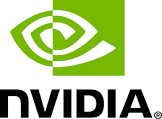$NVDA $AMD $SOXX
#Nvidia #AI #Semiconductors #TechStocks #StockMarket #Investment #AIStocks #Chips #TechIndustry #NASDAQ #MarketAnalysis #Trading
Nvidia has been an undeniable powerhouse in the technology sector in recent years. Its dominance in the artificial intelligence (AI) and semiconductor industries has catapulted its stock price and revenue to unprecedented levels. However, the company might now be facing its toughest challenge yet—its own success. Analysts often reference the concept of the “hedonic treadmill,” which suggests that as individuals or companies achieve more success, their aspirations and what constitutes “success” also rise. For Nvidia, this means the bar is now set astonishingly high, with market expectations reflecting nothing short of continued exponential growth in revenue, profits, and innovation.
Nvidia’s dominance in the GPU segment and its leadership in AI chips have fueled remarkable financial growth. Its stock price surged more than 200% this year, fueled by optimism surrounding AI adoption across various sectors such as healthcare, entertainment, and autonomous vehicles. Analysts and investors alike have pinned Nvidia as a keystone of the next technological revolution. However, this explosive growth has heightened scrutiny over whether the company can sustain or exceed these towering expectations. While Nvidia’s financial metrics for 2023 have been historic, much of the current valuation is predicated on future performance. Wall Street often reacts severely to any indication a company may underdeliver, meaning even a slight miss in revenue or guidance could trigger a correction in its share price.
This creates a precarious position for Nvidia. Its valuation, with a price-to-earnings (P/E) ratio far exceeding historical averages, leaves little room for error. Competitors like $AMD and companies tied to semiconductor indexes, such as ETF $SOXX, are also ramping up efforts to close the gap in AI-related technology. Meanwhile, supply chain constraints and geopolitical tensions in regions critical to chip production, such as Taiwan, add another layer of risk. Nvidia does appear to have a strong competitive moat in its technology and ecosystem, but the challenges of maintaining leadership in such a high-stakes industry cannot be understated. Investors need to consider whether the risk-reward profile justifies its premium valuation amidst these swirling uncertainties.
Looking ahead, Nvidia’s future prospects rely heavily on expanding its dominance in AI while navigating intensifying global competition. The company has the cash reserves and research capabilities to drive growth, but execution will be critical. Additionally, macroeconomic factors—such as Federal Reserve rate hikes and general market sentiment—could dampen appetite for high-growth, high-valuation stocks like Nvidia. Ultimately, Nvidia’s challenge isn’t its competitors, supply chain, or geopolitics—they are factors to manage. The company’s biggest hurdle might be the inflated expectations that come with its own stellar track record. For investors, the risk is clear: Nvidia could either continue exceeding expectations or stumble under the weight of them, triggering significant repercussions for both the stock and broader market sentiment regarding AI potential.











Comments are closed.